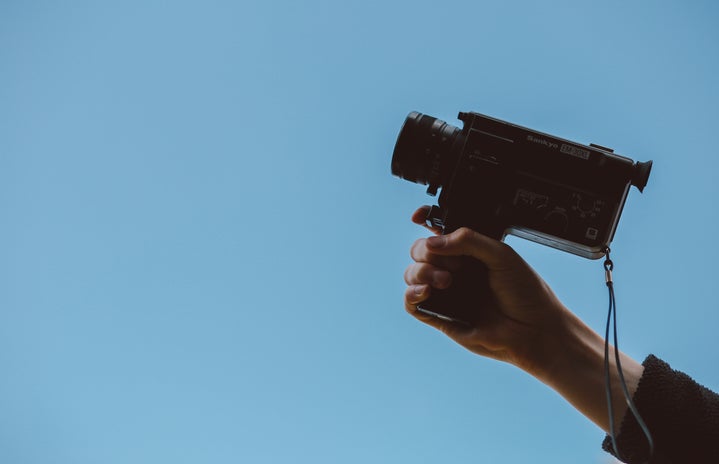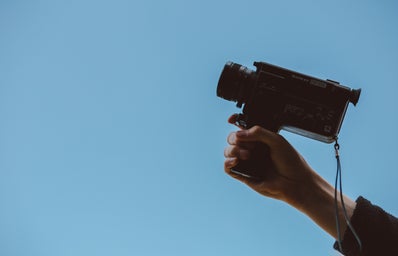When people watch a movie, they often don’t see the effects that the film industry has on society through its social construction of gender. They don’t see the gendered biases that exist and don’t comprehend what it takes to make it as an actress or female director; to constantly be critiqued based on society’s idea of beauty standards, to endure sexual abuse in order to land roles, or to even be denied the chance to be part of a film because being a woman is seen as being “inferior”.
Films also provide false ideas of masculinity to men, femininity to women, and how the two are supposed to act overall. They focus on the heteronormative culture and often dismiss the LGBT+ community in the mainstream. Films use traditional gender norms to tell society that women are to be submissive, represent conventional beauty and exist for male consumption. Whereas they tell men to never cry, keep their emotions inside and be dominant and powerful.
Not only do films push these false ideas about gender onto society, and discreetly influence everyone who watches, but the industry itself also faces gendered issues ranging from the pay gap to male domination to sexual abuse.
In light of recent cases of sexual assault of women by big names in Hollywood like Harvey Weinstein and Bill Cosby, and the rise of the #MeToo movement, ties between feminism and the film industry are being examined more and more. The subliminal ways in which films teach people false lessons about gender norms, along with the gender inequality and abuse that exists behind the scenes of the industry, both work towards the upholding of a patriarchal system and its poisoned notions that need to be dismantled.
In Judith Lorber’s text “Night to His Day”, she discusses how “gender and sex are not equivalent, and gender as a social construction does not flow automatically from genitalia and reproductive organs”. Although people tend to think of gender as a concrete fact, in reality “the building blocks of gender are socially constructed statuses”.
Throughout youth, “social statuses are carefully constructed through prescribed processes of teaching, learning, emulation, and enforcement” wrote Lorber. People are formed by society into the gender it wants them to be. This further makes the gender norms represented in films, as well as gender inequality in the industry, all a result of the way that society wants people to behave.
Our culture says that people born with a vagina identify as a girl, and people born with a penis identify as a boy, no question. Gender is so much more than this, yet film continues to influence people in the wrong direction by pushing unrealistic standards, norms, and ideas about gender and identity as well as promoting senseless inequality in the industry.
Without a doubt, the social construction of gender can be seen in every facet of the film industry.
Sexualization and Objectification of Women
Whether it be movie posters, scenes, or advertisements, it is very common for women to be sexualized and objectified in the film industry. Sometimes it can be done for “comedic” purposes, or purely to “attract” an audience, neither of which are valid excuses.
According to Business News Daily, “Women are used to sell products most often when pitching sex”. Why is it that a woman has to be naked to attract positive attention for a film? In addition, it is often only women’s bodies that are featured on film or TV advertisements. Their faces are left out because all society cares about is their sex appeal and body image; they are dehumanized and objectified through this process.
Moreover, this message that is projected through the film industry tells women everywhere that they have to fit this criteria of being sexual, scandalous and submissive; it tells them that they exist for sexual consumption and are good for nothing else. In the patriarchal system that exists today, women are still viewed as sexual objects whom men believe that they are entitled to.
In her article “Toxic Culture 101”, Shadia Duske highlights the common place of this sexualization in our culture today. She explains how, “We are bombarded with hypersexualized images of females, so much so that most of us don’t even notice them” (Duske, 1). Sexualization has become such a common part of the culture today that people don’t even realize how it is “encouraging the normalization of female objectification” and is feeding into this overtly flawed system (Duske, 1).
Gender Pay Gap
According to CNBC, “Women earn just 79 cents for every dollar men make in 2019.” In such a modern time where feminism has come a long way and is becoming more embraced every year, it is hard to believe that such a gap still exists–especially one that is so drastic. It is known that this gender pay gap affects a variety of different jobs, but one that people may not think about often is the job of acting.
Using the Forbes’ list for the highest-paid actors and actresses of 2019, the top ten highest paid female actresses are consistently getting paid about half of what the top ten highest paid male actors make in 2019. This cannot purely be written off as a coincidence; it is a systemic issue. The pay gap is not because women are not as talented as their male counterparts or don’t work as hard, but it is due to an unjust system that prioritizes the work of men. They get more role opportunities and praise in the film industry which further causes them to earn a bigger paycheck. Do they really deserve it?
Heteronormativity
According to Lexico, the word Heteronormative can be defined as “Denoting or relating to a world view that promotes heterosexuality as the normal or preferred sexual orientation”. This relates to the social construction of gender in film as often only heterosexual couples are depicted on the silver screen, further ommiting all other identities of those belonging to the LGBT+ community. The majority of film posters for romance films depict straight couples who represent only two genders. They show men and woman in a close, happy, and intimate embrace, where the man is typically holding the woman.
Society deems this image as the ideal romantic standard: women are submissive, men are dominant, couples should be happy all of the time, heterosexuality is preferred, and the traditional gender binary is favored. These ideas further are ingrained within our culture through popular films.
The culture today blatantly favors heterosexual norms while casting all other forms of sexual and identity expression as subversive. Purely displaying heteronormative standards in film dismisses the importance and acceptance of the LGBT+ community in our culture, sets unrealistic norms for people to follow, and creates a less progressive society.
Major Characters in Film: Men vs. Women
According to a study titled “It’s a Man’s (Celluloid) World” conducted at San Diego State University, only 36% “of over 2500 characters appearing in the 100 top domestic grossing films of 2018” were females . The Independent states that “it’s interesting to look at major characters, who represent another indicator of the state of the industry as a whole” .
The fact that major characters in films have consistently been male-dominated for years illustrates another way that the social construction of gender dominates film. Since key behind the scenes roles are typically held by men, in an effort to conserve their “male gaze” and keep the “inferior” artistic opinions of women out of film, it becomes harder for women to acquire roles as major characters. They are viewed as being given the role of “the love interest” or “the wife” or “the mother”, while men get to ride in the front seat with the protagonist roles. The acquisition of leading roles in film is a gendered issue and women are not given equal opportunity to thrive in the major character roles that they deserve.
Stereotyping of Men
While women are shown in movies to be pretty and submissive, men are often depicted as strong and powerful. They usually have a role that acts as the hero of the story, or is otherwise the protagonist, and get to show off their “manliness” through combat and mental strength.
In posters for films like Taken 3 and John Wick 2, both of the men showcased on the posters have stern, strong looks on their faces and are surrounded by guns and violence. They look like they’ve been through tough battles and have persevered to save the day. Men are shown to always be able to withstand threats and come out on top, as well as protect people. Rarely do they cry, they are always depicted as being in peak physical condition, and many times they are associated with guns and violence. Like women, there is an idea of the ideal man that is projected. When a constant narrative of how one should behave is in film after film, it further becomes part of our culture and society. Men are taught from a young age not to cry, not to express their feelings, to be strong (both mentally and psychically), and to like only “manly” things.
Underrepresentation of Female Directors
Women have always been, and continue to be, overlooked in the film industry when it comes to behind the scenes work. In a recent USC Annenberg study on inclusion in film, the results show that across 1,135 content creators just 4.5% of them were female directors.
According to an article by the BBC, “People often refer to the “female lens” or the “female gaze” when talking about women directors” . The idea of a woman’s perspective and shooting the film using their “female lens” is seen as a challenging view by men, and they find women’s differing lens inferior compared to their own. They’d much rather prefer using “male gaze” when filmmaking because it promotes the opinions and views of the typical heterosexual, cisgender man.
In the same article, Nithya Raman, a female director in Hollywood, states that “The industry is a slow-moving one, a conservative one that resists change” . It is hard for male directors to accept the fact that female directors are their equals and should be getting the same opportunities that they are subjected to.
“Hammer [a male director] said the experience working with Leder [a female director] was the same as working with any talented director,” yet the majority of male directors still refuse to share the stage with women and refuse to let the “female gaze” be projected into the film industry .
Sexual Abuse
According to The Guardian, “A survey has found that 94% of women employed in the American film industry have experienced sexual harassment or assault” (Pulver, 1). With the rise of allegations of sexual assault against Hollywood bigs like Harvey Weinstein and Bill Cosby, and the #MeToo movement, more women than ever are speaking out against the abuse they have had to endure while trying to make it in the film industry.
However still, another survey conducted by USA Today reveals that out of the 843 women who were surveyed “Only one in four women reported these experiences to anyone because of fear of personal or professional backlash or retaliation” (Puente and Kelly, 1). In addition, even of the women that did report them, “only 28% say their workplace situation improved after reporting” (Puente and Kelly, 1).
It is evident that there is a major systemic problem when it comes to the abuse of women in Hollywood. No woman, or anybody for that matter, should have to endure sexual assault just to make it in the industry. Abuse in the film industry is a gendered problem that is fueled by the patriarchal system and its notions.
At the end of the day, gender is more of a personal experience than an actual indicator of anything scientific. gender is represented in films in ways that are demeaning, unhealthy and unjust. They promote the traditional Western binary gender system that is outdated, heteronormative standards, as well as expected gender norms that are archaic. In addition, the film industry is unrightfully male dominated in all positions ranging from actors to directors to writers. Men are favored, and women are not given an equal opportunity to showcase their talent. Women deserve to be seen as equals to men instead of their inferiors, as well as should no longer have to suffer the abuse of sexual assault in order to land roles. The social construction of gender apparent in film is flawed in so many ways and desperately needs a feminist makeover.



